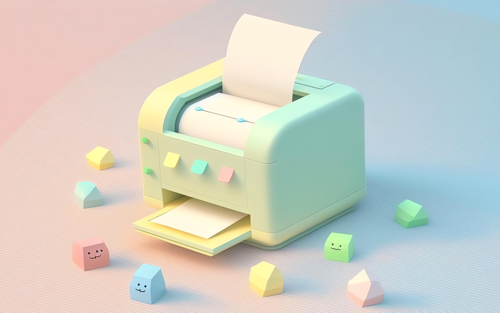For LiDAR scanning solution Polygon Mirrors and Scanner Motors Vol.3
For LiDAR scanning solution Polygon Mirrors and Motors Vol.3
- Chapter 9 New!
- Recommend Mirror Thickness ReductionThinning (1)
-(1) Laser Printer Precedent-
Why not apply polygon mirror thickness be reduced to LiDAR
Looking ahead to the future widespread adoption of LiDAR, achieving reduce production costs a significant challenge for mass production poses. As a company boasting the world's No.1 market share and supply record for polygon mirrors used in industrial equipment, we recommend the thickness reduction of polygon mirrors for LiDAR.
Laser scanning using polygon mirrors has been used not only in LiDAR but also in various industrial equipment such as office equipment represented by laser printers and multifunction devices, medical digitizers, and laser measuring instruments. Particularly in the laser printers, there has been remarkable advancement in optical technology, driven by trends like colorization, high-speed printing and compact design.
In this new volume, explore successful cases of polygon mirror thickness reduction, focusing on the technological innovations over the years led to new approaches in optical system designs in industrial applications typified by laser printers.
Let's take a look at how laser printers work
The image on the lower right shows the internal structure through a laser printer.

- The following image shows the internal structure through a laser printer.
To make it even easier to understand, we've also provided a simplified planar view below. Let's go through the printing process step by step.
Printing with a laser printer involves five steps: 1) Charging → 2) Exposure → 3) Developing → 4) Transfer → 5) Fixing.
-
Step.1 Charging
The entire surface of the photosensitive drum is evenly charged with negative static electricity from the charge roller. During this process, the photosensitive drum carries several hundred volts of charge. In dark areas, the drum acts as an insulator, but when exposed to light, it becomes conductive. -
Step.2 Exposure
Laser light is directed towards the charged areas on the drum where printing is needed. A laser diode emits laser light that is reflected by a rotating mirror, allowing rapid line scanning onto the rotating drum. Where the laser light is exposed, the charge dissipates.。 -
Step.3 Developing
When the negatively charged toner is brought close to the exposed drum, it adheres only to the areas where the charge has dissipated on the drum's surface. Areas that weren't exposed to the laser light retain their charge and do not attract toner. -
Step.4 Transfer
A transfer roller with a positive static charge, opposite to the drum's charge, is placed behind the paper. As the paper passes through, the toner adhering to the drum is transferred to the paper. -
Step.5 Fixing
Lastly, since the toner is still in a “loose” state on the paper, it's melted and pressed onto the paper using heat and pressure to ensure it doesn't come off. Think of it like ironing.
The use of lasers in the step.2 “Exposure” process, specifically for scanning, is why it's called a laser printer. If you're interested in learning more about the technological innovations of optical system designs for laser scanning during the exposure process, please proceed to the next chapter.










